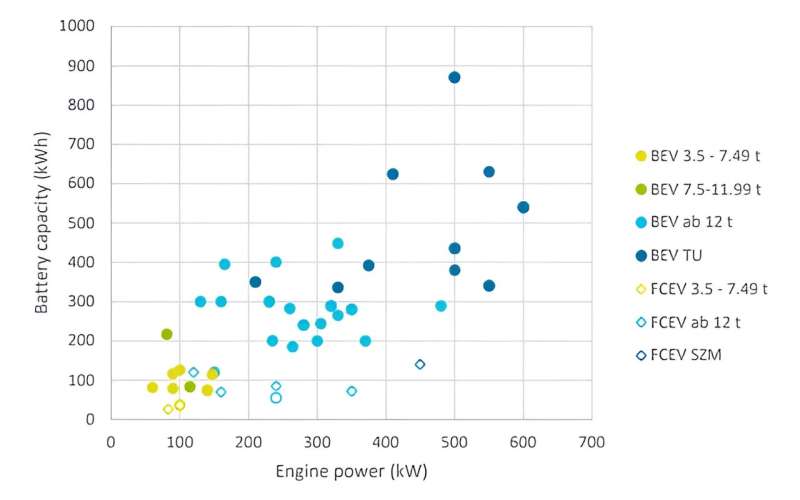by Clara Wisotzky, Öko-Institut e. V. – Institut für angewandte Ökologie

The availability of a broad-scale and well-performing charging network by 2035 offers potential to increase new registrations of battery electric trucks to 100%. The key entry point for ensuring the market success of zero-emission drive technologies is the rapid and targeted rollout of a charging infrastructure for heavy-duty commercial vehicles. Greenhouse gas emissions from road freight transport will then decrease significantly, particularly post-2030, reaching zero in 2045.
These are some of the findings of a recent research project by the Oeko-Institut, which evaluated various drive technologies in road freight transport to identify their technical and economic potential.
Cost benefits of battery electric trucks
The comparison of the various drive technologies shows that in future, battery electric trucks will offer advantages over trucks with a power supply from overhead lines or fuel cells; this applies even with conservative assumptions about technical conditions such as potential ranges and available charging options.
According to the total cost calculation, fuel cell vehicles are far more expensive than pure e-trucks due to the high level of uncertainty surrounding hydrogen prices. Overhead catenary trucks, however, are limited to routes that are equipped with overhead lines; this constitutes a barrier to fleet electrification.
“The analysis also shows that e-trucks pay off,” says Dr. Katharina Göckeler, project manager and an expert in low-carbon freight transport at the Oeko-Institut. “Once the truck toll imposes a surcharge of 200 euros per ton of carbon dioxide from December 2023, all zero-emission vehicles will offer clear cost benefits compared to conventional diesel-powered HGVs.”
Electricity demand and energy infrastructure
If all trucks are electrically powered in future, final energy consumption in road freight transport will decrease. The reason is that battery electric drive technology is far more efficient in operation than the combustion engine. By 2045, annual electricity demand to power heavy-duty commercial vehicles will amount to 110 TWh. At present, the entire road freight fleet requires 173 TWh per annum.
As the key prerequisite for the success of e-trucks, the public charging infrastructure for heavy-duty commercial vehicles must be substantially expanded. In particular, charging hubs must be established along motorways and must be suitable for both overnight and rapid charging.
The needs assessment shows that around 55% of a truck’s total energy demand can be charged in the depot before departure, while 25% can be charged overnight using public night charging systems (NCS), covering multi-day journeys. The remainder of the energy requirement must be met en route using high power charging solutions. With a Megawatt Charging System (MCS), batteries can be charged within the legally prescribed 45-minute rest period after 4.5 hours of driving.
“We need a network of around 2,000 MCS charging points and roughly 40,000 NCS charging points along Germany’s motorway network,” says Katharina Göckeler. “As MCS charging stations rely on a connection to the high-voltage grid to provide high power charging, planning for their rollout must start right away.”
More information:
StratES: Scenarios for the electrification of road freight transport. www.oeko.de/fileadmin/oekodoc/ … ght-transport-EN.pdf
Provided by
Öko-Institut e. V. – Institut für angewandte Ökologie
Citation:
The future of road freight transport is electric, says report (2023, August 29)
retrieved 30 August 2023
from https://techxplore.com/news/2023-08-future-road-freight-electric.html
This document is subject to copyright. Apart from any fair dealing for the purpose of private study or research, no
part may be reproduced without the written permission. The content is provided for information purposes only.
Stay connected with us on social media platform for instant update click here to join our Twitter, & Facebook
We are now on Telegram. Click here to join our channel (@TechiUpdate) and stay updated with the latest Technology headlines.
For all the latest Technology News Click Here
For the latest news and updates, follow us on Google News.
